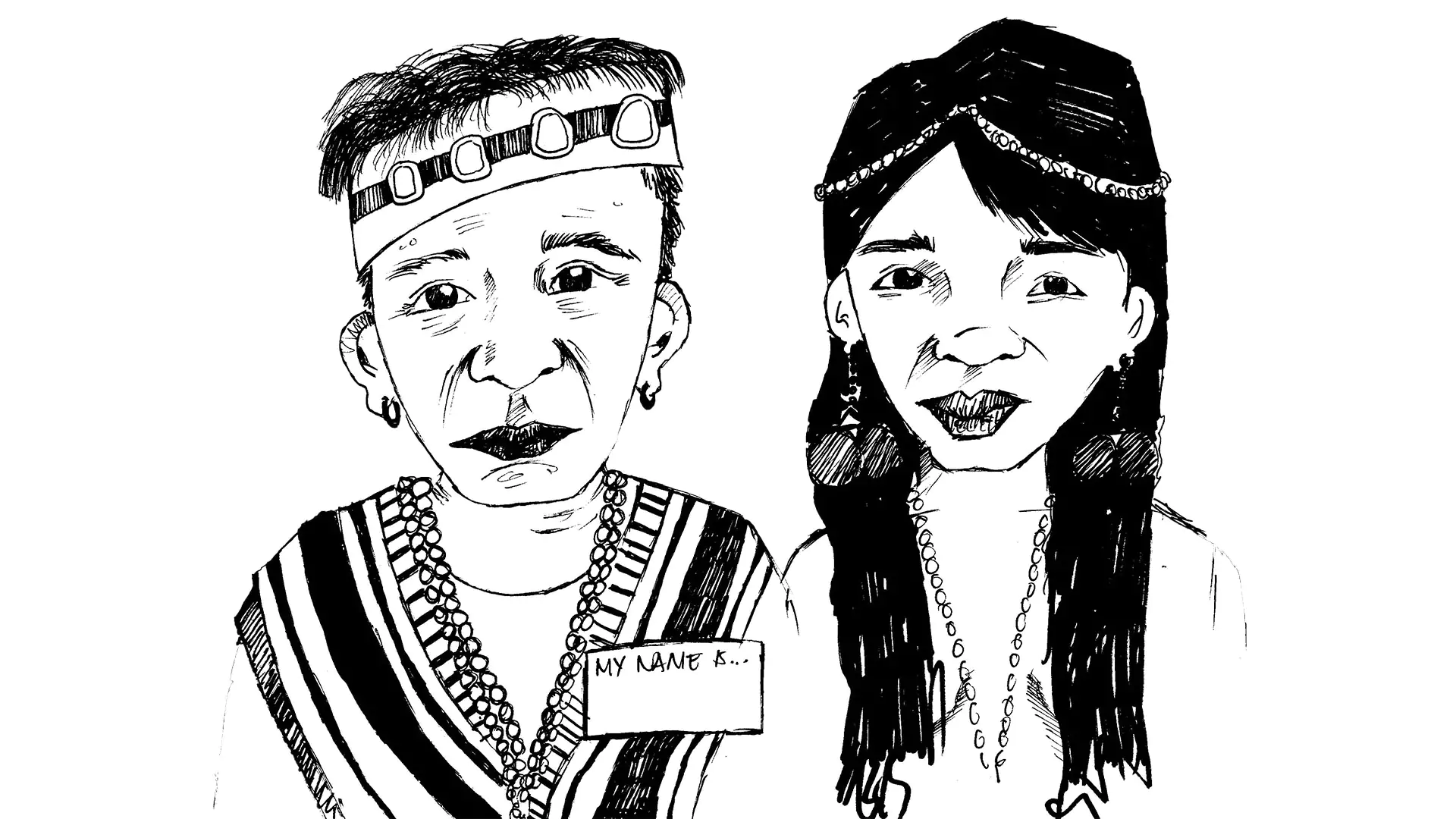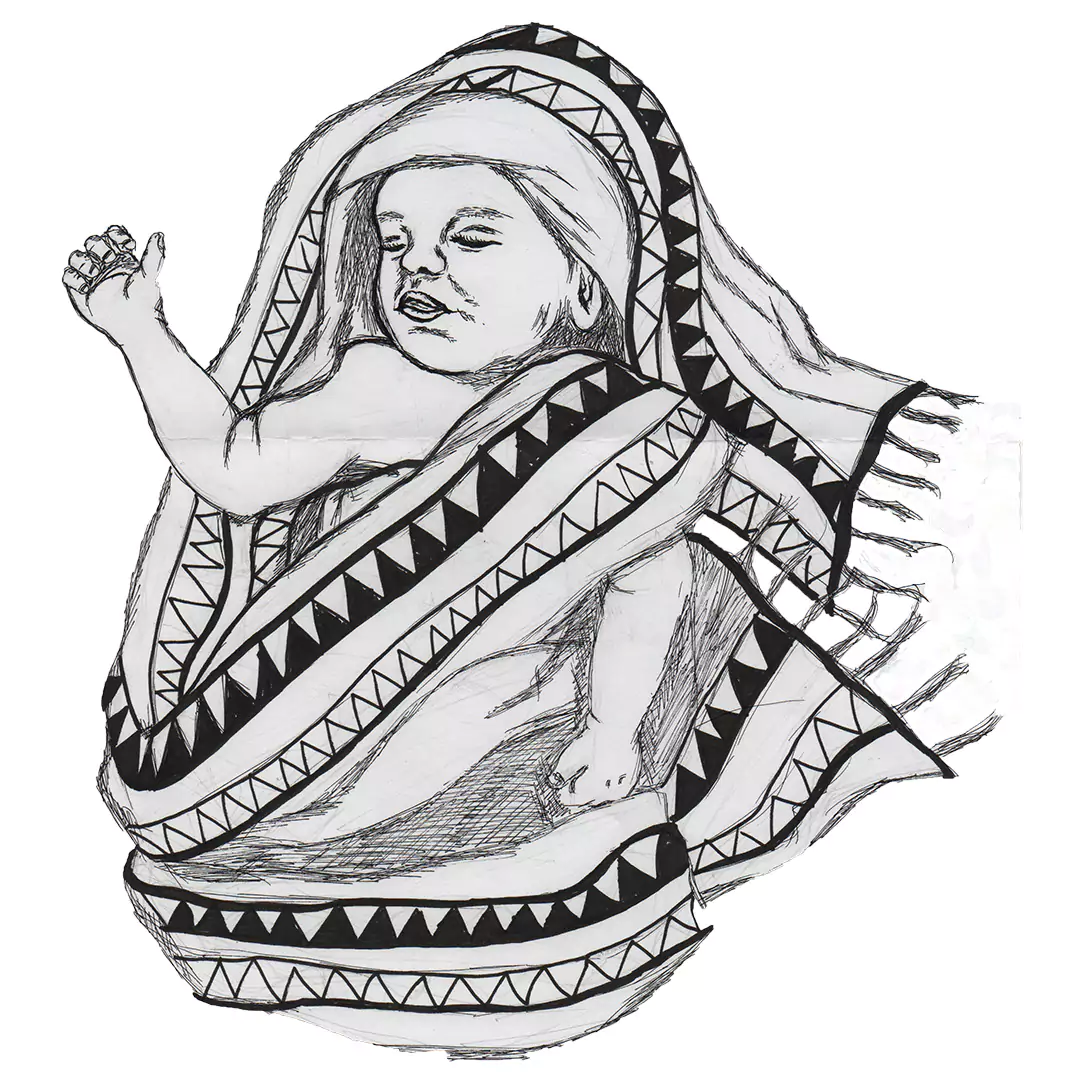CULTURE
The Art of Igorot Nicknaming
by Dine Yve Daganos, The Mountain Collegian Alumni | originally published as a development communication article in The Mountain Collegian Magazine Vol. 46, Issue 3 (November 2017 – December 2017)
"Preserving Identity: The Art and Significance of Igorot Nicknaming"

“Na-na-nan, ngadan mo et Toma-ak. (Tralala… Your name will be Toma-ak.)” gladly declared the delighted grandmother Amaydan to her grandson.
“Kyle. Blake. Vincent. Or Vin. Of all these more beautiful names I have, why am I popularly called Toma-ak?” complained Blake Kyle Vincent to her grandmother. From names spelt with countless vowels, millennial people dealt to having names with numerous consonants and syllables which are usually difficult to pronounce, or are seemingly tongue-twisters.
On a general note, nicknames are shortened versions of a person’s name and it often reflects the aspects of a person’s personality, accomplishments, or failures. Nicknames are sometimes patterned with the craze and fad. For example, naming a child after a favorite singer or celebrity like “Miley Cyrus” or “Enchong Dee”.
Nicknames according to the Webster’s dictionary is a name given in contempt, derision, or reproach, or with reference to some act, habit, or peculiarity of the person.
According to a study conducted by Belluvue University, Nebraska, men give nicknames as a way of being affectionate without compromising masculinity. Using it as an endearment and for marketing purposes are some purposes of giving nicknames. Nicknames also signify belongingness in a group where you belong.
In the Cordilleras particularly in Mountain Province, nicknaming is more than just one’s shortened name. It is beyond giving an ‘alias’ or pseudonyms.
What’s an Igorot Nickname?
Mountain Province is one of the provinces in the Cordillera region which still practice the art of Igorot nicknaming. In fact, they have varied ways of giving Igorot nicknames, specifically to children. In Bauko, this practice is termed buday or beday.
Velma Ruth Ofo-ob, National Commission on Indigenous Peoples (NCIP) personnel of Bontoc, Mountain Province, said that the most significant feature of Igorot nicknaming is for identity purposes. Accordingly, this serves as a trademark of an Igorot.
This was affirmed by an elder of Sadsadan, Bauko Rufino Annangan saying: “I am called Bitaga (his Igorot nickname) because this is me. There may be one who has my nickname, but this is me. My identity cannot be the same with that of others for in some way there is something that is only unique to me that pertains to my identify.”
Accordingly, he had the nickname Bitaga because it was the name of his great grandfather.
How Igorot Nicknames are Given
Igorot nicknames can be dictated multifactorially. It may be based on the preferences of the parents. Parents nickname their child as a preservation of an important name in one’s genealogy as said by Abcasan Paday-os, an elder from Monamon Norte, Bauko. According to him, a child can inherit the name of his/her grandparents who have passed away through nicknaming.
Moreover, one may inherit an Igorot nickname based on the virtues of a deceased relative. Novelyn (not a real name) said: “My mom adored my grandmother that much because of her thriftiness that is why she named me after my grandmother believing that I could be like her.” Her grandmother’s name was Banganay, so that’s how she is called among family members and as well as in their community.

Igorot nicknames may also be based on the community and the people the parents belong. For instance, if a mother patronizes somebody then she eventually names the child in accordance to his or her name.
“I was walking on a road when I heard a man shouting the nickname of his lass named Magda. Magda is so cute so when I had my first baby girl I gave Magda as her nickname,” shared Aling Belen of Maba-ay, Bauko.
In some occasions, Igorot nicknames are also associated to a woman’s pregnancy. Lani Domasi, 55-year old native of Sadsadan, Bauko, experienced serenity during her pregnancy hence; the child is now popularly called as Kapya (it means peace in English).
And a lady from Ifugao said that she is called Dinaun by her mother, because she resembles or looks like her lola who is named Dinaun. Further, names are given to a person based on his or her physical features and personality. If one lacks one finger he/she can be called Pukol or when someone looks like her/his grandparents, they can be called with their grandparents’ name.
They may also be given as one’s permanent name. Registered in the Philippine Statistics Authority (PSA), a child uses the name in school transactions and in signing legal papers like biodata, marriage certificate, and application papers, an example is the name of key informant Abcasan. Paday-os reiterated that having a permanent first name Abcasan, is not embarrassing to him, instead, it gives him honor to have it since it’s very native in nature rather than having adopted names like John, Jeff, and Peter.
More than Nicknaming
Dr. Stanley F. Anongos, Center for Culture and Arts (CCA) director and the lady from Ifugao having the Igorot name Dinaun shared the same concept about “lost soul” (literally lost). Because accordingly, when a person experienced “lost soul”, the mumbaki (or an elder) will call his/her native name or Igorot name and when his/her ancestors recognize the name, the soul will be restored.
Batulin Baani, a lady from Sagada, Mountain Province, said that one implication of Igorot nicknaming is valuing the uniqueness of the Cordilleran culture.
“Today’s generation has little knowledge on the culture and beliefs of our forefathers before,” added Baani.
“Igorot naming or nicknaming is very unique. Kasi konti lang or wala kang kapangalan doon sa Igorot name mo. ‘Pag kasi sa Christian name natin, marami tayong kapangalan. so parang kabilang sa uniqueness mo ‘yong Igorot name mo,” says Kate Tuguinay of the College of Teacher Education (CTE), fourth year student.
Igorot Nicknaming Today
“Igorot nicknaming is still practiced today, it’s just that it became complicated because of our Christian names so our Igorot names became secondary,” says Dr. Stanley F. Anongos, Center for Culture and Arts (CCA) director.
“For practicality, having Igorot nicknames is for identity purposes because when you go home to your hometown and they call you with your Igorot nickname, they will immediately know that you are a relative of that family,” added Anongos.
We cannot deny the fact that we are living in today’s society where technology almost engulf us. We tend to forget the cultures and beliefs that our ancestors had. Indeed, the practice of Igorot nicknaming enlightens the Igorot family into preserving and valuing more of the Igorot traditions for this is one of the best customs that our forebears bestowed unto us.
